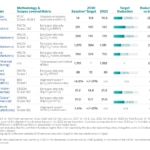BBVA publishes intermediate emission reduction targets for the real estate and aluminum sectors
BBVA is expanding its intermediate emission reduction targets for 2030 to two new sectors: the real estate sector in Spain and the global aluminum industry. They join the list of targets for eight emission-intensive sectors previously set by the bank (oil & gas; power generation; automobile; steel; cement; coal; aviation and shipping).
BBVA's decarbonization targets: What do they mean and what is their scope?

"Real estate and aluminum are critical for economic development. In the case of the real estate sector in Spain, it will be essential to advance and effectively implement adequate incentives to support both businesses and individuals in the process of decarbonizing the sectors,” said Javier Rodríguez Soler, Head of Sustainability and CIB at BBVA.
Within the BBVA Group’s real estate portfolio, Spain represents 70 percent of financing of the sector globally. BBVA has set different targets for each segment of the real estate sector. In this sense, for commercial real estate, BBVA’s target is to reduce the intensity of its financing portfolio by 44 percent between 2023 and 2030. For the mortgage segment (residential real estate), the reduction target for this period is 30 percent.¹
For aluminum, the bank set the target of aligning its financing portfolio to the decarbonization trajectory established by the International Aluminum Institute (IAI) for a global emission reduction of 28 percent by 2030. In other words, reaching a percentage deviation (delta) of 0 percent or less with respect to this decarbonization path in 2030.
Decarbonization of the real estate sector
The real estate sector represents 37 percent of CO2 emissions in the world.² Its decarbonization is therefore critical in order to meet the Paris Agreement’s global climate targets for 2050.

However, this decarbonization poses a complex challenge due to the nature of the sector. Specifically, real estate emission reduction depends on a wide variety of factors. They include improving the energy efficiency of real estate to reduce energy demand, the electrification of energy consumption and greater penetration of renewable energy through self-consumption or increased installation of renewable energy in the electricity system.
In order to achieve these targets, a coordinated effort is essential, with the participation of multiple stakeholders. Climate policies and adequate public incentives will be particularly relevant for the decarbonization of the residential real estate sector.
In this sense, Spain has an Integrated National Energy and Climate Plan (PNIEC) as a road map that defines the national emission reduction targets, penetration of renewable energy and energy efficiency. BBVA’s hypotheses are based on this scenario and its fulfillment will be essential in order to accomplish the established decarbonization objectives.
In this context, BBVA maintains its strategy for both the residential and commercial real estate sectors. This strategy is based on accompanying and advising clients and offering diverse solutions that promote enhanced real estate energy efficiency, and maximize opportunities for savings when possible.
Decarbonization of the aluminum sector
Aluminum is considered a key metal in industrial processes and its demand is expected to grow 40 percent by 2030³, propelled by the energy transition, electric vehicles and construction. Therefore, transitioning the aluminum sector to net zero emissions is fundamental in order to meet the global climate targets of the Paris Agreement.

The aluminum industry represents two percent of global greenhouse gas emissions.⁴ It is an emission intensive sector due to the elevated energy use in its primary production processes.⁵ The key driver to reduce emissions is the decarbonization of the electricity supply. However, given that approximately 55 percent of the energy consumed by the sector globally is self-generated⁶, a significant portion of these emissions depend on the industry itself.
The alignment metrics of the financing portfolio of this sector have been calculated using the Sustainable Aluminum Finance Framework methodology developed by the Rocky Mountain Institute (RMI). It is currently the only standardized methodology available for the sector, and it provides banks the tools they need to measure, compare and disclose the climate alignment of their loans to the aluminum sector in line with a scenario of 1.5°C. The metrics used are tons of CO2 emissions per ton of aluminum produced.
The aluminum sector has industry leaders who are developing ambitious plans, many of which are based on new clean technologies to produce aluminum with zero emissions by 2050.
Advances in client decarbonization
BBVA is part of the Net-Zero Banking Alliance (NZBA). Joining this alliance entails progressively publishing intermediate targets for 2030 for the most intensive emission sectors.
Last March, BBVA published advances in the decarbonization of key industries, with improvements in terms of the decarbonization of its financing portfolio, which are particularly significant (-24 percent) in the power generation and oil and gas sectors.
Furthermore, BBVA has sectoral plans to provide guidance on the alignment of the portfolio. These plans incorporate risk considerations, assess clients’ transition plans with proactive advice and take advantage of business opportunities to move forward in the attainment of the set objectives.
In addition to financing the transition of its business, BBVA contributes to the development of new and innovative low carbon technologies (cleantech) through investment commitments to climate funds with a focus on decarbonization. Among these funds, Fifth Wall stands out in the real estate field, investing in companies specialized in reducing and/or mitigating the CO2 emissions of the construction and real estate sector.
Intermediate emission reduction targets for 2030⁷
